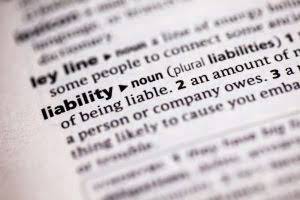Employee or Independent Contractor? A Guide to the New Rule U S. Department of Labor Blog
That same Stanford study of remote workers allowed the participating company to save nearly $2,000 per employee on its office space rent, simply by using the space more efficiently. Telework helps businesses attract and retain talent, and it’s becoming increasingly sought after. In all, 80% to 90% of US employees say they’re interested in remote work. Millennials now make up about 68% of those on the hunt for a new job, and surveys show that they largely prefer remote work. Senior employees also say they are interested in telecommuting, because it offers more flexibility and a better work-life balance.
According to Global Workplace Analytics, employers who allow employees to work from home part-time save about $11,000 per year per employee, a number that would increase for fully remote employees. While remote work isn’t without its challenges, it tends to have fewer interruptions, less noise, and more efficient meetings, increasing productivity. Pair the higher salary with the possibility of a lower cost of living, and remote workers have a substantial financial advantage over on-site employees. However, lines can blur between work and home life if you’re not careful, which is why fully remote companies encourage employees to maintain a healthy work-life balance. Maintaining balance is a learnable skill and one of the essential skills of remote work. With no commute, employees can use that time to exercise, spend time with family, or pursue hobbies.
Major Cost Savings
This means that they have access to a broader range of job opportunities and may be able to negotiate higher salaries or better compensation packages. Furthermore, remote work can allow employees to take on additional work or side hustles, which can increase their income and financial stability. Employees now get to work remotely from the comfort of their homes without having to commute to work on a regular basis. This has been helpful in streamlining their time management, saving time due to the absence of having to commute to the office daily. Employees can attend to their families and personal activities in the time saved, helping them to strike a proper work-life balance. One of the primary reasons behind the growing popularity of work from home is the flexibility of work hours it comes with.
Much of this was due to the elimination of daily commutes and lengthy in-person meetings. A range of communication tools for remote workers like Slack, QuizBreaker, and PulseMate make it easy to create strong bonds with colleagues who live in different time zones. Removing the requirement to live within commuting distance of an office means remote companies often have more diverse and inclusive teams. Remote work gives people who may have a hard time getting a job at a traditional company more opportunities.
Companies Hiring for Remote Jobs
It is likely that leaders will need to intervene and create connections between groups that do not naturally interact or that now interact less frequently as a result of the hybrid virtual model. Now let’s begin to factor in other priorities, such as employee productivity. Here the question becomes less straightforward, and the answer will be unique to your circumstances. When tackling the question, be sure to go beyond the impulse to monitor inputs and activity as a proxy for productivity.
Being in the middle means sorting out the percentage of your employees who are working remotely and how often they are doing so. Let’s say 80 percent of your employees work remotely but do so only one day per week. In the four days they are on premises, they are likely getting all the social interaction and connection needed for collaboration, serendipitous idea generation, innovation, and social cohesiveness. In this case, you might be fine with the partially remote, large headquarters (HQ) model in the exhibit. In a podcast, business magnate and philanthropist Bill Gates recently said that in the pre-pandemic business world, people worried that a client would be offended by a virtual meeting.
The top 8 benefits of remote work for employees
Two of the most popular video meeting tools in the business world are Microsoft Teams and Zoom. However, this technology isn’t beneficial if employees don’t know how to use it. Once organizations worked out the kinks, they found this new way of working had some benefits. Here are some things for businesses to keep in mind as the world emerges from lockdowns and into a new working environment. As the COVID-19 crisis begins to wane and vaccinations become more widespread, many people want to continue working remotely, at least on a part-time basis.
The increased satisfaction that remote work can bring employees is another positive effect. This is because the ability to work from home often provides employees with a better work-life balance, which can lead to increased job satisfaction and motivation. As some companies move to adopt broader telecommute policies, others such as Yahoo! have publicly retreated from allowing workers to perform their jobs away from headquarters. Companies have cited the need for office “face time” and the benefits of spontaneous interaction among reasons to avoid remote work, even for highly skilled, autonomous employees. In addition, a remote company can still have a presence with an office.
Access to a Larger Talent Pool
The final rule will help the Wage and Hour Division to continue addressing misclassification and prioritizing the most vulnerable workers who are being misclassified – because that’s what we must do. In addition, the rule will help to ensure that independent contractors, including freelancers, who are in business for themselves are properly classified. We recognize that independent contractors play an important role in our economy – and this rule won’t change that. The Wage and Hour Division is committed to protecting employees’ rights across America. To do so effectively, we must help businesses and workers understand how to differentiate employees from independent contractors who are in business for themselves.
The chances of them using single-use utensils and kitchenware are slim. Employees are also happier from having a better work-life balance, which can motivate them to work harder. No one’s internet connection is completely stable at every possible second. Electricity and internet outages aside, connections can vary in speed how companies benefit when employees work remotely and reliability over the course of a day. For people in crowded areas where many others also work from home — such as apartment complexes and densely packed cities — slow speeds, buffering, and poor audio and video connections are common. Organizations also must contend with the possibility of confidentiality breaches.



